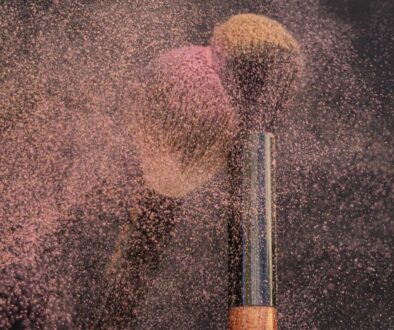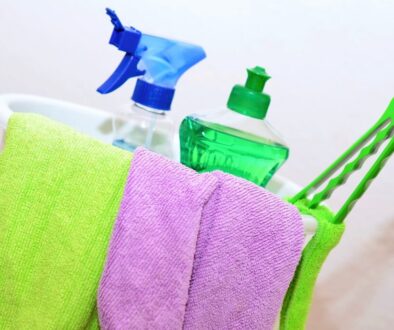A Gradual Approach to Spring Cleaning Comes with Benefits

Despite spring cleaning offering a range of benefits for both your physical space and mental well-being, it’s completely understandable to feel overwhelmed by the thought of facing a large or cluttered space. Here are a few tips to help make the process feel more manageable.
However, tackling cleaning in small portions makes it more achievable and prevents overwhelming feelings that can come with a large cleaning project. By spreading out the tasks over time, you can maintain a cleaner living space more consistently rather than letting messes build up until a major cleaning is needed.
Develop a cleaning plan or checklist to help you stay organized and track your progress. Prioritize tasks based on urgency or importance, and don’t feel pressured to complete everything in one day. Set realistic goals for yourself, whether it’s focusing on one task per day or dedicating a few hours each weekend to cleaning.
Don’t be afraid to ask for assistance from family members or roommates and celebrate your progress and accomplishments along the way. Treat yourself to something you enjoy after completing a cleaning task.
Remember, it’s okay to take your time and approach spring cleaning at a pace that feels comfortable for you. Small steps can eventually lead to a cleaner and more organized living space without the stress of trying to do it all at once.
The Benefits
Overall, spring cleaning is not just about a cleaner home; it’s also about creating a more comfortable, healthier, and enjoyable living environment for you and your family. Here are some of the key advantages.
Improved indoor air quality: Regular cleaning helps remove dust, pet dander, and other allergens that can accumulate in your home. This can lead to better indoor air quality and a healthier living environment.
Reduced stress: A clean and organized space can have a positive impact on your mental health. Cluttered environments have been linked to increased stress and anxiety, so decluttering and cleaning can help create a more calming atmosphere.
Increased productivity: A clean and organized space can boost productivity and focus. When your surroundings are free of clutter and distractions, you may find it easier to concentrate on tasks and stay motivated.
Prevention of illness: Regular cleaning helps remove germs and bacteria that can cause illnesses. By maintaining a clean home, you can reduce the risk of spreading infections and stay healthier overall.
Extended lifespan of belongings: Dust, dirt, and grime can damage furniture, flooring, and other household items over time. By regularly cleaning and maintaining these items, you can help extend their lifespan and keep them looking newer for longer.
Creates a sense of accomplishment: Completing a thorough spring cleaning can give you a sense of accomplishment and satisfaction. It’s a great way to start the season feeling refreshed and organized.
The Plan
The best approach to spring cleaning involves a systematic and thorough method to ensure that every area of your home receives attention. Here’s a step-by-step guide to help you tackle spring cleaning effectively, leaving your home feeling fresh, clean, and revitalized.
Approaching spring cleaning slowly and steadily can lead to a cleaner, more organized living space with less stress and more efficiency.
- Make a Plan: Start by making a list of all the areas in your home that need attention. This could include rooms, closets, cabinets, and outdoor spaces. Break down each area into specific tasks to make the process more manageable.
- Gather Supplies: Before you begin, gather all the cleaning supplies you’ll need, including multipurpose cleaners, microfiber cloths, sponges, scrub brushes, vacuum cleaner, mop, bucket, and garbage bags. Having everything on hand will streamline the cleaning process.
- Declutter: Begin by decluttering each area of your home. Go through closets, drawers, and cabinets, and set aside items you no longer need or use. Donate or discard these items to free up space and reduce clutter.
- Dust and Wipe Down Surfaces: Dust all surfaces, including shelves, countertops, furniture, and electronics, using a microfiber cloth or duster. Wipe down surfaces with a multi-purpose cleaner to remove dirt, grime, and fingerprints.
- Clean Windows and Window Treatments: Wash windows inside and out using a window cleaner or a solution of water and vinegar. Don’t forget to clean window sills, tracks, and blinds or curtains as well.
- Vacuum and Mop Floors: Vacuum carpets and rugs thoroughly, paying special attention to high-traffic areas and under furniture. Use a mop to clean hard floors, using a solution of warm water and floor cleaner.
- Deep Clean Kitchen and Bathrooms: Scrub kitchen countertops, sinks, and appliances with a degreasing cleaner. Clean the inside of the refrigerator and oven, and wipe down cabinets and drawers. In the bathrooms, scrub the bathtub, shower, toilet, and sink, and clean mirrors and fixtures.
- Wash Bedding and Linens: Strip beds and wash all bedding, including sheets, pillowcases, and blankets. Launder towels and other linens as well.
- Organize and Rearrange: Take the opportunity to organize and rearrange furniture, if desired. Consider optimizing storage solutions to make the most of your space.
- Tackle Outdoor Areas: Don’t forget to tackle outdoor areas such as patios, decks, and entryways. Sweep away debris, wash outdoor furniture, and clean grill grates if applicable.
- Inspect and Maintain: As you clean, take the opportunity to inspect your home for any maintenance issues that may need attention, such as leaks, cracks, or damaged seals.
- Dispose of Waste Properly: Dispose of any waste, recycling, or hazardous materials properly, following local guidelines.

Homemade Natural Cleaning Products
When possible using homemade natural cleaning products offers several advantages, including being eco-friendly, cost-effective, and safer for your health. The following are some common homemade natural cleaning solutions you can easily make.
Remember to label your homemade cleaning products properly and store them safely out of reach of children and pets. While these natural solutions are generally safer than commercial cleaners, it’s always a good idea to test them in inconspicuous areas first, especially on delicate surfaces.
All-Purpose Cleaner:
Mix equal parts of water and white vinegar in a spray bottle.
Add a few drops of essential oils such as lemon, lavender, or tea tree oil for a pleasant scent and added cleaning power.
This solution is effective for cleaning countertops, surfaces, glass, and more.
Window Cleaner:
Mix equal parts of water and white vinegar in a spray bottle.
Optionally, add a few drops of lemon juice for extra shine.
Use this solution to clean windows, mirrors, and glass surfaces.
Disinfectant Spray:
Mix 1 part water with 1 part hydrogen peroxide in a spray bottle.
Add a few drops of essential oils like tea tree oil or eucalyptus oil for their natural disinfectant properties and pleasant scent.
Use this solution to disinfect countertops, doorknobs, and other high-touch surfaces.
Baking Soda Scrub:
Mix baking soda with a small amount of water to form a paste.
Use this paste to scrub and clean sinks, bathtubs, and tiles. Baking soda is mildly abrasive and helps to remove stains and grime.
Furniture Polish:
Mix 1 part olive oil with 1 part white vinegar or lemon juice in a spray bottle.
Shake well before use and spray onto a soft cloth.
Use the cloth to polish wooden furniture, leaving it clean and shiny.
Toilet Bowl Cleaner:
Sprinkle baking soda into the toilet bowl.
Add a splash of white vinegar.
Let it fizz and sit for a few minutes before scrubbing with a toilet brush.
This natural combination helps to remove stains and deodorize the toilet bowl.
Grease Cutter for Kitchen Surfaces:
Mix 1 part castile soap with 3 parts water in a spray bottle.
Add a few drops of lemon essential oil for extra grease-cutting power.
Use this solution to clean kitchen countertops, stove surfaces, and greasy spills.




